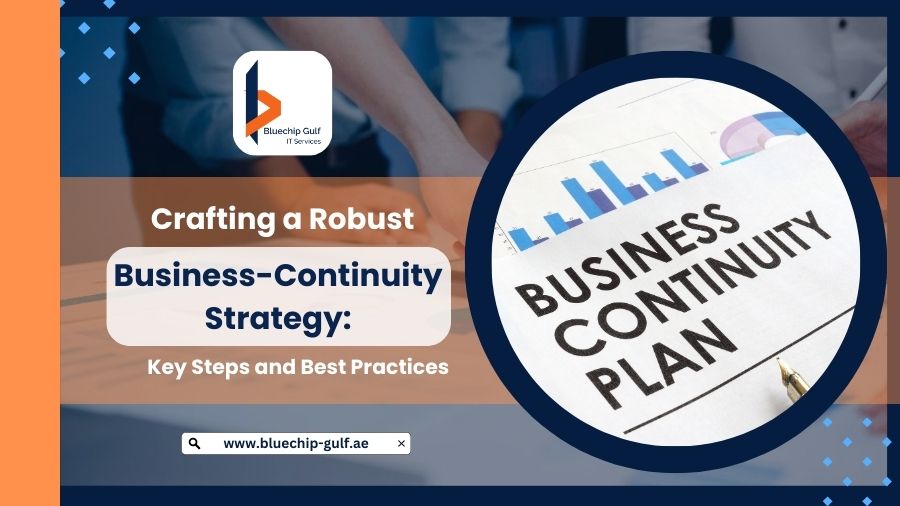
Marketers must prioritize the establishment of a resilient business-continuity strategy to ensure seamless operations even in the midst of unforeseen disruptions or crises. Recognizing the significance of such a plan and its fundamental components empowers marketers to proactively create and sustain a potent strategy that safeguards their organization.
Importance of Business-Continuity Strategy
A business continuity plan is a forward-thinking strategy that delineates the course of action an organization will follow to maintain its core operations during unexpected disruptions. It serves as a comprehensive framework with directives and protocols designed to mitigate risks, effectively handle crises, and bolster the organization’s resilience.
Within the broader scope of an organization’s operations, marketers play a distinctive role. Their responsibilities encompass the promotion of products or services, cultivation of brand recognition, and the facilitation of sales growth.
A hiccup or interruption in marketing activities can wield substantial consequences, affecting both the company’s reputation and revenue streams. Consequently, marketers must be equipped with a robust business continuity plan to curtail potential disruptions and safeguard the continuity of their marketing endeavors
Essential Components of a Strong Business-Continuity Strategy
1.Risk Assessment and Management
The basis of any adequate business-continuity strategy is a thorough understanding of potential risks and vulnerabilities. This involves identifying and assessing various threats, whether they are natural disasters, cyberattacks, supply chain disruptions, or other unforeseen events. Once these risks are identified, strategies for mitigating and managing them can be developed.
2.Business Impact Analysis
Conducting a comprehensive business impact analysis is crucial. This step involves evaluating the potential consequences of a disruption on different aspects of the organization, such as operations, finances, reputation, and customer relations. This analysis guides the prioritization of critical functions and resources that need protection and recovery efforts.
3.Recovery Strategies and Procedures
This element outlines the specific strategies and procedures to be employed in the event of a disruption. It covers not only the technical aspects of recovery, like data backup and IT system restoration but also the logistical and operational considerations, such as temporary office space, communication plans, and supply chain alternatives. These strategies are designed to decrease downtime and confirm a speedy return to normal functions.
Steps to Create a Robust Business-Continuity Strategy
Creating a robust business continuity plan requires a systematic approach to ensure all critical aspects of your organization are considered. Here are the steps to develop such a plan –
1.Initiation and Leadership
Establish a clear mandate for creating the plan. Appoint a dedicated team or individual responsible for overseeing the planning process. Ensure senior leadership support and commitment to the plan’s development.
2.Risk Assessment
Determine possible risks and hazards that could disrupt your business functions. This includes natural disasters, cyberattacks, supply chain disruptions, and more. Conduct a risk assessment to prioritize these hazards based on their probability and possible effects.
3.Business Impact Analysis (BIA)
Perform a detailed BIA to understand how each potential disruption would affect your organization. Identify critical business functions, dependencies, and the economic and functional results of downtime. This analysis helps in setting recovery priorities.
4.Strategy Development
Develop strategies to mitigate and manage the identified risks. This includes defining preventive measures to reduce the likelihood of disruptions and recovery measures to minimize downtime when disruptions occur.
5.Plan Documentation
Document your business continuity plan in a clear and concise manner. Ensure it includes detailed procedures for responding to various scenarios, contact information for key personnel, and recovery strategies. Make sure the program is available to all applicable employees.
6. Testing and Training
Regularly test your strategy through tabletop practices and simulations to confirm its efficacy. Train workers on their positions and duties during a disruption. Use these exercises to identify deficiencies and areas for advancement.
7.Resource Allocation
Assign the vital resources, comprising budget, personnel, and technology, to support your business continuity efforts. Ensure that recovery resources are readily available when needed.
8.Communication Plan
Develop a robust communication plan that outlines how you will notify employees, customers, suppliers, and other stakeholders in the event of a disruption. Set clear lines of communication and backup communication methods.
9.Vendor and Supplier Engagement
Collaborate with critical vendors and suppliers to ensure they have their own business continuity plans in place. Understand their capabilities and identify alternative suppliers if needed.
10.Continuous Monitoring and Review
Business continuity planning is an ongoing procedure. Daily review and revise your strategy to account for shifts in your organization, technology, or the business environment. Reassess risks and vulnerabilities periodically.
11.Regulatory Compliance
Ensure that your plan complies with any industry-specific regulations or standards, such as ISO 22301 for business continuity management.
12.Crisis Management
Develop a crisis management team and procedures for managing major disruptions. This team should be responsible for making critical decisions during a crisis and coordinating response efforts.
13.Employee Awareness
Educate all employees about the business continuity plan and their roles in its execution. Encourage a culture of preparedness and emphasize the significance of reporting possible problems promptly.
14.Documentation Storage
Store copies of the plan and important documents in secure, off-site locations to ensure accessibility in case your primary facilities are affected.
Testing and Sustaining Your Business-Continuity Strategy
Creating a business continuity plan represents just one facet of preparedness; maintaining the plan through testing and updates is equally critical to ensure its continued efficacy. This necessitates routine testing, simulations, and adapting the plan to evolving business dynamics.
1. Regular Plan Testing
Marketers should regularly subject their business continuity plan to assessments and simulations to gauge its effectiveness. These exercises serve to uncover any deficiencies or vulnerabilities within the plan, enabling necessary adjustments. During testing, marketers can evaluate elements like response times, communication efficiency, and overall plan functionality. Such evaluations offer valuable insights for refining the plan, guaranteeing its resilience and relevance.
2. Adapting to Changing Business Needs
In an ever-evolving corporate landscape, marketers must periodically revisit and revise their business continuity plan to accommodate shifting business requisites. This entails reevaluating risk assessments, business impact analyses, and recovery strategies to ensure they remain attuned to the contemporary marketing environment. Frequent plan reviews and updates empower marketers to proactively anticipate and address potential disruptions that may materialize in the future.

